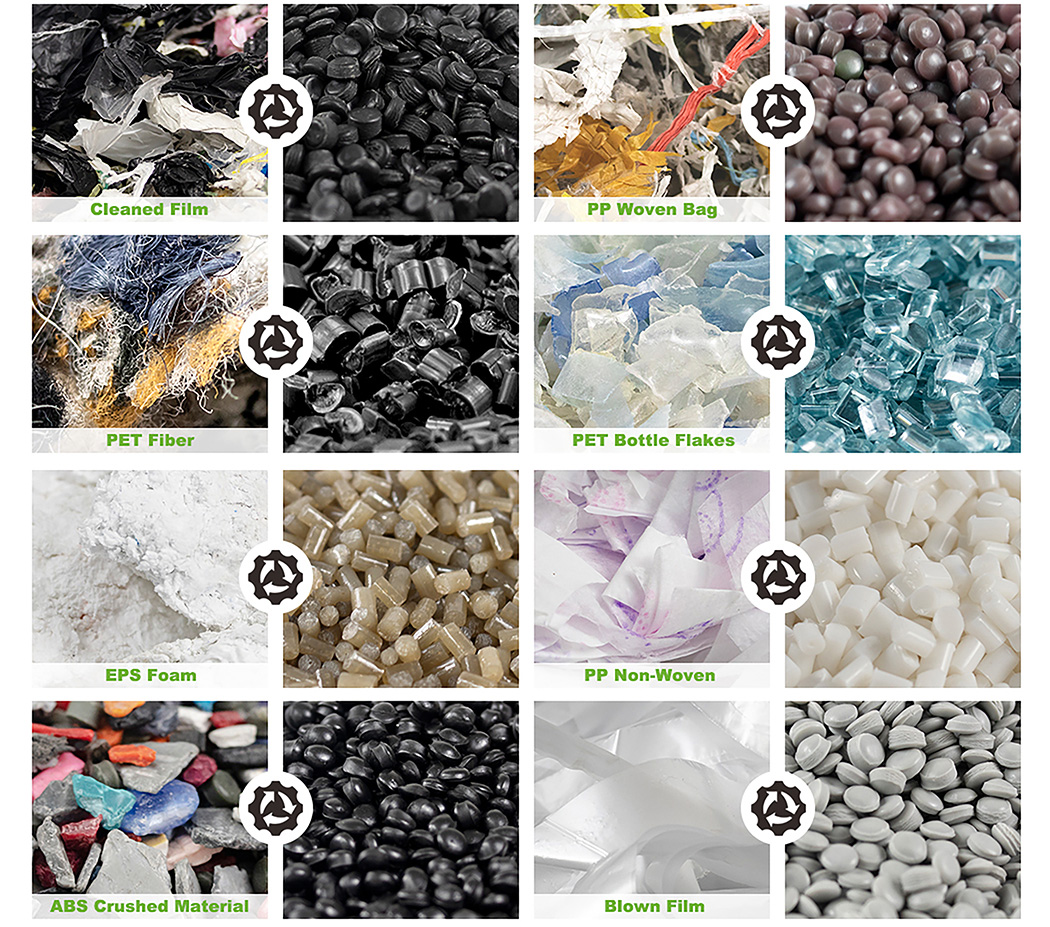Article content:
1. What are plastic particles?
2. Raw material selection and pretreatment
3. Melting and Mixing
4. Particle Formation Technology
5. Particle cooling and solidification
6. Particle screening and classification
7. Summary
1. What are plastic particles?
Plastic particles are the basic raw materials for the plastic processing and extrusion industry. These particles undergo a series of processing steps and are eventually transformed into various plastic products, such as packaging materials, building materials, wire insulators, etc. The quality and manufacturing process of plastic particles directly affect the performance of the final product.
2. Pretreatment of raw materials
The manufacture of plastic particles first requires the selection of raw materials. Commonly used plastic raw materials include polyethylene, polypropylene, polyvinyl chloride, etc. Raw material selection should be based on the performance requirements of the desired product. Pretreatment steps usually include dust removal and crushing of raw materials to ensure that the purity and particle size of the raw materials meet production requirements.
3. Melting and Mixing
In the melting stage, the raw material is heated above its melting point to form a molten state. Temperature and time control during the melting process are critical to ensure complete melting of the plastic and avoid thermal degradation. The molten plastic is then mixed using a stirrer or screw extruder to ensure an even distribution of the components.
The screw is one of the core components of the plastic extruder, which mainly plays the roles of plasticizing, conveying, and extruding. Specifically, the screw rotates and heats during the extrusion process, causing the plastic to enter the spiral groove and undergo mixing, shearing and heating, and finally converts the solid plastic into a molten state to meet the needs of extrusion molding. At the same time, the screw can also compress the molten plastic and increase the density of the plastic in order to obtain good molding effects. In addition, the screw is also a conveying tool in the plastic extrusion process, pushing the molten plastic from the spiral groove to the head, and then cutting into pellets. Therefore, the output speed and output capacity of the screw directly affect the quality of plastic particles. In addition, the diameter of the screw also has an important impact on extrusion production. Generally speaking, the larger the screw diameter, the greater the production capacity of the extruder. However, an excessively large screw diameter may also cause the plastic to stay in the cavity for too long, causing decomposition and oxidation, affecting the quality and performance of the particles.
4. Particle Formation Technology
The molten plastic reaches the extrusion grinding head after filtering impurities. The plastic pelletizer is the key link in the plastic particle manufacturing process. Particle formation is the key link in the plastic particle manufacturing process. Common cutting methods include: water ring cutting, strip cutting, underwater cutting, etc.
5. Particle cooling and solidification
The formed particles undergo a cooling and solidification process to ensure that the particle structure is stable. Too fast a cooling rate may lead to excessive stress within the particles, affecting product quality. Therefore, the cooling speed and temperature need to be reasonably controlled so that the particles maintain a uniform temperature distribution during the cooling process.
6. Particle screening and classification
The cooled and solidified particles need to be dried and sieved through a vibrating screen to remove moisture on the particles and particles of unqualified size.
7. Summary
The plastic particle manufacturing process involves multiple links, each of which affects the quality of the final product. Therefore, the parameters and quality of each link should be strictly controlled during the manufacturing process to ensure that the product meets standard requirements. At the same time, we should also pay attention to environmental protection and recycling to promote the sustainable development of the plastics industry.
Plastic Pellets Manufacturing Process
2024/02/02